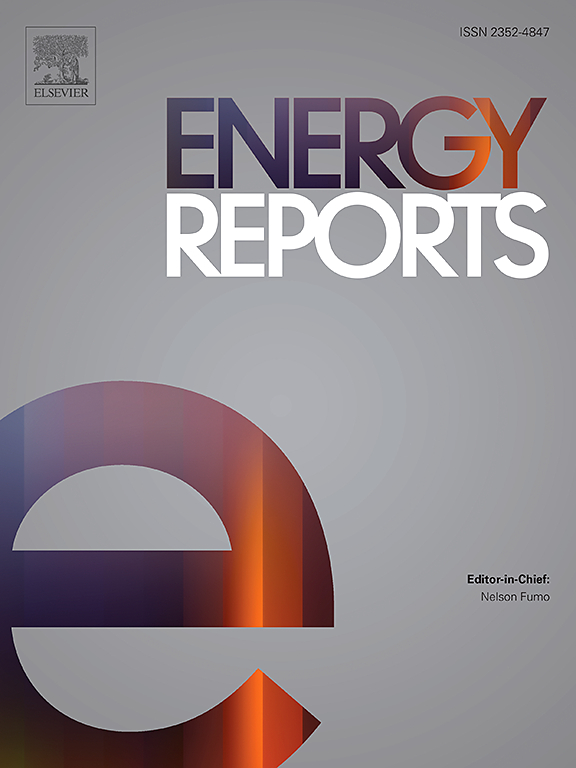大陆性地中海气候条件下多串逆变器拓扑下工业屋顶光伏自用系统性能评价
IF 5.1
3区 工程技术
Q2 ENERGY & FUELS
引用次数: 0
摘要
本文分析了在实际运行条件下安装在工业屋顶上的7个光伏自用系统的性能和并网情况。所分析的系统具有不同的方向和峰值功率容量,允许通过IEC 61724和文献中提出的不同指标和度量来评估其行为,例如性能比(PR),最终产量(Yf)或容量利用系数(CUF)等。此外,这些系统与负载和电网的相互作用进行了检查和建议,提供了一个更好的视图,他们的运行。结果表明,尽管大多数系统的运行接近预期,PR、Yf和CUF的年平均值分别为0.81、1555.51 h/y和0.19,但部分遮阳、捕获损失和无电网注入的逆变器配置等因素会影响它们的效率。引入了拟议的等效容量利用率(YL)、负荷比(YGL)、电网负荷比(YGL,TG)和电网负荷比(YGL,FG)来描述当地需求和电网约束之间的相互作用,提供了对系统性能和电网使用的全面评估。在屋顶光伏系统集成后,观察到互联节点以其标称容量运行的满负荷等效小时减少,因为YGL的值始终低于YL的值。结果还表明,文献中提出的指标和指标以及实际数据监测是评估光伏系统性能和优化其与电网集成的有效工具。本文章由计算机程序翻译,如有差异,请以英文原文为准。
Performance evaluation of photovoltaic self-consumption systems on industrial rooftops under continental Mediterranean climate conditions with multi-string inverter topology
This study analyses the performance and grid integration of seven photovoltaic self-consumption systems installed on industrial rooftops under real operating conditions. The analysed systems feature different orientations and peak power capacities, allowing to evaluate their behaviour through different indices and metrics proposed in the IEC 61724 and the literature, such as the Performance Ratio (PR), Final Yield (Yf) or Capacity Utilisation Factor (CUF), among others. Additionally, the interaction of these systems with the load and the electrical grid is examined and proposed, providing a better view of their operation. The results reveal that, although most systems operate close to expectations, with PR, Yf and CUF annual averages of 0.81, 1555.51 h/y and 0.19 respectively, factors such as partial shading, capture losses, and inverter configurations without grid injection affect their efficiency. The proposed Equivalent Capacity Utilisation Yield (YL), Load Ratio Yield (YGL), Load Ratio To Grid Yield (YGL,TG) and Load Ratio From Grid Yield (YGL,FG) are introduced to characterise the interaction between local demand and electrical grid constraints, providing a comprehensive assessment of system performance and grid use. A reduction in the full-load equivalent hours during which the interconnection node operates at its nominal capacity is observed following the integration of rooftop photovoltaic systems, as the values of YGL are consistently lower than those of YL. The results also indicate that the indices and metrics proposed in the literature, together with real data monitoring, are effective tools for evaluating the performance of photovoltaic systems and optimising their integration into electrical grids.
求助全文
通过发布文献求助,成功后即可免费获取论文全文。
去求助
来源期刊

Energy Reports
Energy-General Energy
CiteScore
8.20
自引率
13.50%
发文量
2608
审稿时长
38 days
期刊介绍:
Energy Reports is a new online multidisciplinary open access journal which focuses on publishing new research in the area of Energy with a rapid review and publication time. Energy Reports will be open to direct submissions and also to submissions from other Elsevier Energy journals, whose Editors have determined that Energy Reports would be a better fit.
 求助内容:
求助内容: 应助结果提醒方式:
应助结果提醒方式:


